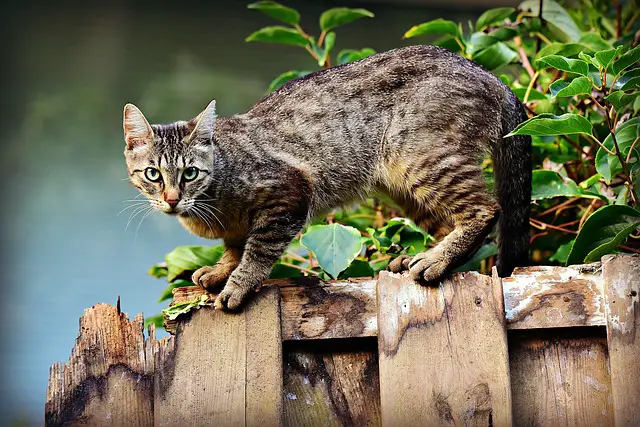Cats are known for their mysterious and independent nature. They often spend hours sitting in one spot, seemingly lost in thought. But what exactly do they think about during these moments of stillness? Many cat owners have wondered about the inner workings of their feline friends’ minds.
While it’s impossible to know what cats are thinking, some clues can help us understand their behavior. For example, cats are known to be highly observant and curious creatures.
They are constantly taking in information from their surroundings, whether it’s the movement of a bird outside the window or the sound of a mouse scurrying across the floor. This means that even when they appear to be doing nothing, they are likely processing a great deal of sensory information.
The Mind of a Cat
Understanding Feline Behavior
Cats are known for being independent creatures but also have complex behaviors that humans often misunderstand. For example, when a cat is sitting and staring off into space, it may appear that they are not thinking about anything.
However, this is not the case. Cats constantly process information from their environment and make decisions based on their instincts.
Cats and Their Environment
A cat’s environment plays a significant role in their behavior. For example, cats are territorial animals and often mark their territory with urine or scratching objects. They also have a strong sense of smell and will use this to identify other cats in their environment.
When a cat sits and stares, it may be surveying its surroundings and assessing potential threats or opportunities.
The Role of Instincts
Cats have several instincts that guide their behavior. For example, their strong hunting instinct drives them to chase and catch prey. Even domesticated cats exhibit this behavior when playing with toys or hunting insects. When a cat sits and stares, it may be waiting for the right moment to pounce on its prey.
In conclusion, when cats sit and stare, they are not simply “doing nothing.” They process information from their environment, assess potential threats and opportunities, and follow their instincts. Understanding feline behavior can help us better understand and care for our feline friends.
What Cats Think About
The Importance of Observation
Cats are natural observers. They spend a lot of time just sitting and watching their surroundings. When they sit and stare at something, they take in all the details and process the information. They constantly analyze and evaluate their environment to ensure their safety and well-being.
When cats stare at their owners, they may observe their behavior and body language. They are trying to understand their owner’s mood and intentions. They may also be trying to communicate their own needs and desires.
The Power of Imagination
Cats have a vivid imagination. They can create scenarios in their minds and play them out. They may daydream or imagine themselves in a different environment when they stare off into space.
Cats may also use their imagination to solve problems. For example, they may imagine different scenarios and outcomes to determine the best action.
The Influence of Emotions
Cats have complex emotions. They can experience many emotions, including happiness, fear, anger, and sadness. When they sit and stare, they may be processing their feelings.
Cats may also use their emotions to communicate with their owners. For example, they may express love or affection when staring at their owner. On the other hand, when they hiss or growl, they may express fear or anger.
In conclusion, cats think about many things when they sit there. They are natural observers, have vivid imaginations, and experience complex emotions. Therefore, we can better understand and communicate with our feline friends by understanding what cats think.
The Benefits of Observing Your Cat
Observing your cat when they are just sitting there can be a fascinating experience. It is entertaining to watch their adorable little faces and quirky behaviors, but it can also provide several benefits for you and your feline friend.
Building a Stronger Bond
Taking the time to observe your cat can help you develop a stronger bond with them. You can learn to better understand their needs and desires by paying attention to their body language and behavior. This can help you give them the love and care they need to thrive.
Identifying Health Issues
Observing your cat can also help you identify potential health issues early on. Changes in behavior, appetite, or litter box habits can all be signs that something is wrong. By noticing these changes, you can take your cat to the vet and get them the care they need before the problem becomes more serious.
Improving Your Cat’s Quality of Life
Finally, observing your cat can help you improve their overall quality of life. Understanding their likes and dislikes can provide them with a more enriching environment. This could mean adding more toys to their collection, giving them a special treat, or simply spending more time playing with them.
Overall, observing your cat when just sitting there can be a rewarding and beneficial experience for you and your furry friend. By paying attention to their behavior, you can develop a stronger bond, identify potential health issues, and improve their quality of life.
[su_box title=”Affiliate Disclosure”]This website is supported by its readers. Please assume that all links are affiliate links. If you make a purchase from one of the links we will make a commission from Amazon. Thank you.[/su_box]




